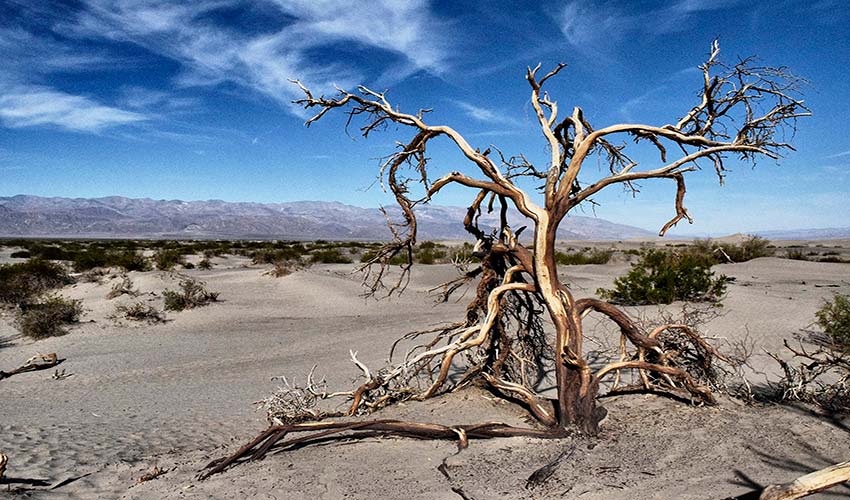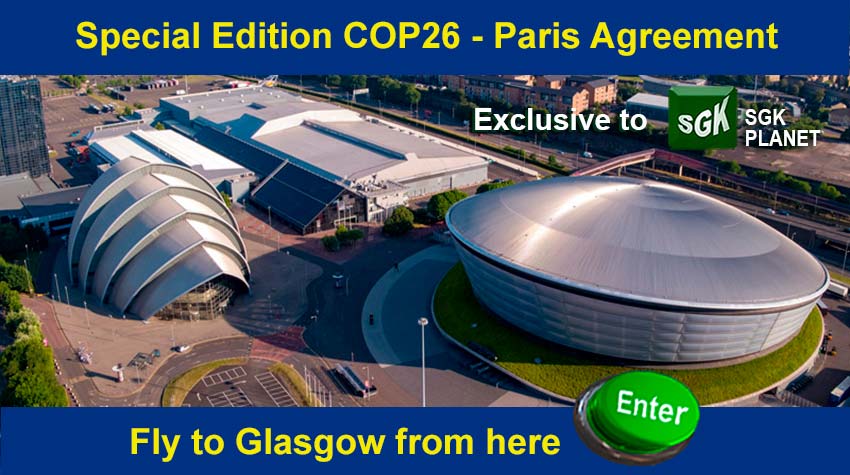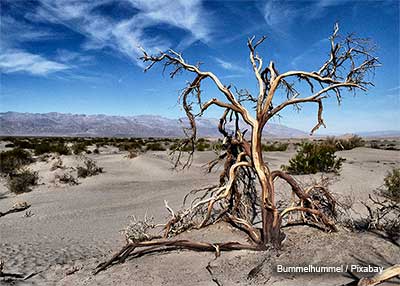FAQs about Desertification

Source: Bummelhummel en Pixabay
8. What is the difference between desertification, drought, and erosion?
Desertification is “the degradation of dry, semi-arid and sub-humid lands resulting from various factors, such as climatic variations and human activities”, as defined by the United Nations Convention to Combat Desertification (UNCCD). Among these factors the most devastating is deforestation. Soil degradation is mainly due to the exaggerated use of unnatural fertilizers and to phytosanitary agents and pesticides. All these methods and products, used in excess, produce the extinction of the organic matter necessary to carry out the processes that intervene in the formation of humus, essential for soil conservation.
Drought is the deficit of rainfall over a long period, such as a season, a year or several years, related to the statistical average of a region. The lack of rainfall produces a water deficit for humans, animals, and plants. Furthermore, drought can have consequences such as food insecurity, famine, malnutrition, epidemics, and population displacement.
Soil erosion is considered a form of soil degradation, which consists of the total or partial removal of its upper layer. There is a process of natural soil erosion, caused by heavy downpours, winds or drought. However, human activities are those that produce high impact erosion through the intensive and extensive use of agriculture and livestock. Soil erosion is the prelude to desertification and is therefore a global environmental problem.





